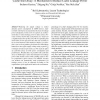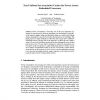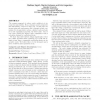16 search results - page 1 / 4 » Applying Decay to Reduce Dynamic Power in Set-Associative Ca... |
HIPEAC
2007
Springer
13 years 11 months ago
2007
Springer
Abstract. In this paper, we propose a novel approach to reduce dynamic power in set-associative caches that leverages on a leakage-saving proposal, namely Cache Decay. We thus open...
PACS
2000
Springer
13 years 9 months ago
2000
Springer
Reducing the supply voltage to reduce dynamic power consumption in CMOS devices, inadvertently will lead to an exponential increase in leakage power dissipation. In this work we ex...
EUC
2004
Springer
13 years 10 months ago
2004
Springer
Abstract. Power consumption is becoming one of the most important constraints for microprocessor design in nanometer-scale technologies. Especially, as the transistor supply voltag...
CF
2005
ACM
13 years 7 months ago
2005
ACM
The common approach to reduce cache conflicts is to increase the associativity. From a dynamic power perspective this associativity comes at a high cost. In this paper we present...
CF
2007
ACM
2007
ACM
Adaptive VP decay: making value predictors leakage-efficient designs for high performance processors
13 years 9 months ago
Energy-efficient microprocessor designs are one of the major concerns in both high performance and embedded processor domains. Furthermore, as process technology advances toward d...



